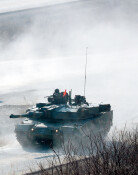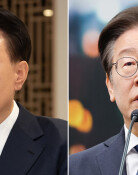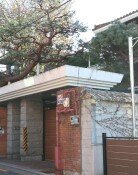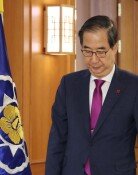No time to waste in global ‘semiconductor industry reshuffle’
No time to waste in global ‘semiconductor industry reshuffle’
Posted May. 22, 2023 08:00,
Updated May. 22, 2023 08:00
The global semiconductor war, which was sparked by the signing of the Semiconductor Act by U.S. President Joe Biden in August last year, is increasingly intensifying. China, which is being checked by the U.S., is pumping massive amounts of funds into the chipmaking sector to secure ‘semiconductor independence.’ Both Taiwan, No. 1 in foundry chip making, and South Korea, No. 1 in memory chip production, have increased investment at home and abroad. Recently, Japan succeeded in attracting a number of global chipmakers to the country. At the same time, the U.K., which possesses fundamental technology for semiconductor design, has also jumped into the race to gain the upper hand.
The Nihon Keizai Shimbun reported the total of investment pledged by Japanese and foreign chipmakers in Japan since 2021 has exceeded 2 trillion yen (14.5 billion U.S. dollars). Taiwan’s TSMC, which is receiving half of its investment in Japan from Tokyo through subsidies, is constructing a foundry plant in Kumamoto Prefecture. Micron, the world’s No. 3 memory chip maker, has also decided to invest 500 billion yen (approximately 360 million dollars) in Japan to produce DRAM chips. Samsung Electronics has decided to invest 300 billion won (225 million dollars) in Yokohama to establish an R&D center for the late-stage chipmaking process.
Japan, the No. 1 player in the global chip industry in the 1970s and 1980s, still has robust potential. The country is atop in the global basic materials market by controlling a 55 percent share of the market and is ranked No. 2 after the U.S. in semiconductor manufacturing equipment by taking up a 35 percent share. Japan is considered an ideal partner for the U.S.’ ‘Friend shoring’ that aims to build a supply network by forming an alliance with allies when compared with Taiwan, which is under China’s threat, and South Korea, which is exposed to risks from North Korea. U.S.-Japan cooperation is gaining momentum, with a possible merger between Japan's Kioxia, the world’s No. 2 NAND flash chip maker after Samsung, and U.S.’ Western Digital, No. 4.
The U.K. government has also pledged to invest about 248 million dollars in semiconductor R&D through 2025. The U.K.'s ARM designs 90% of the application processors, which function as the brains of smartphones, and is a semiconductor design powerhouse that Qualcomm, Alphabet, Apple, and others depend on. For this reason, the British government never allows ARM to be sold to another country, although SoftBank CEO Masayoshi Son is its majority shareholder.
South Korea passed a special semiconductor law in March this year after turns and twists. However, due to problems including power supply concerns, it is already uncertain whether Samsung’s bid to complete a semiconductor cluster by 2023 can be achieved. Rival countries have entered a do-or-die battle to compress the period from investment decision to factory operation to two to three years. Amid this ’chip war,’ which has become an all-out battle between the world’s strongest players in chipmaking, stumbling even for a moment can quickly turn South Korea into an underdog.
Joong-Hyun Park sanjuck@donga.com







